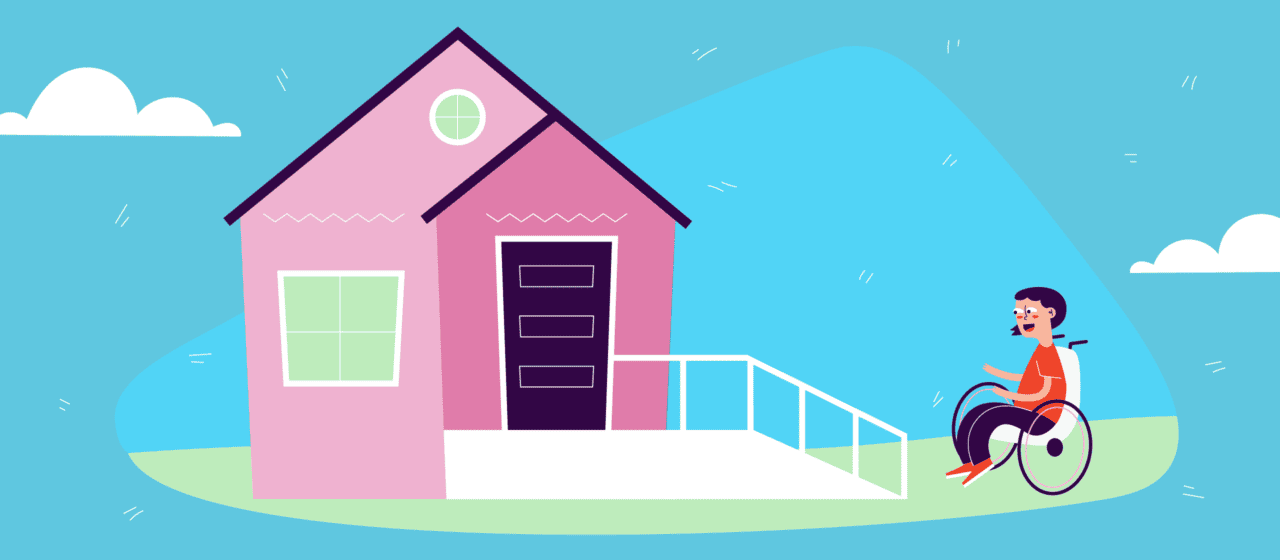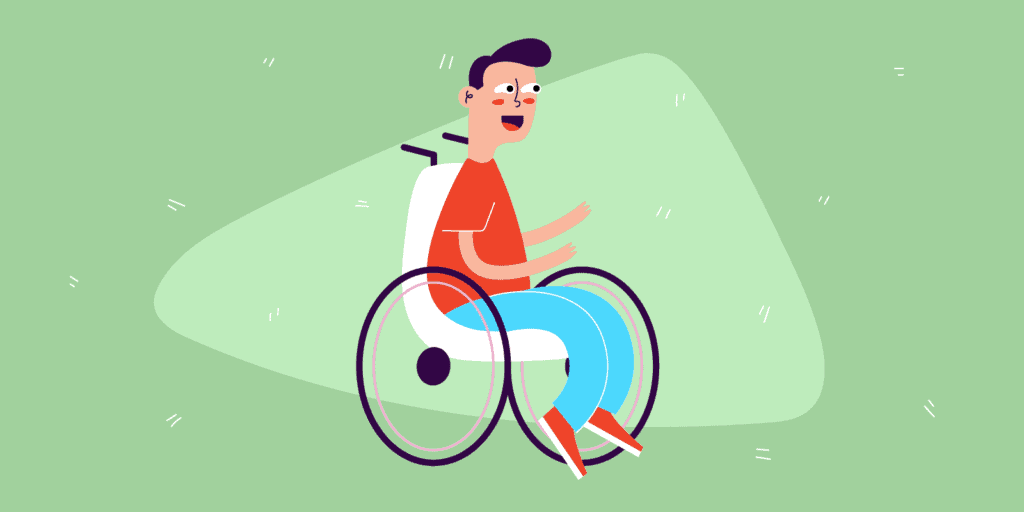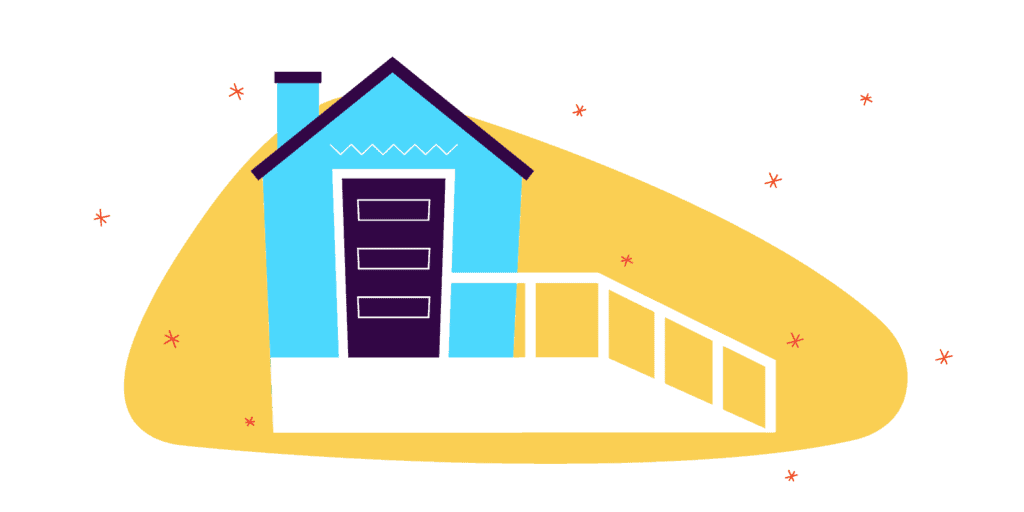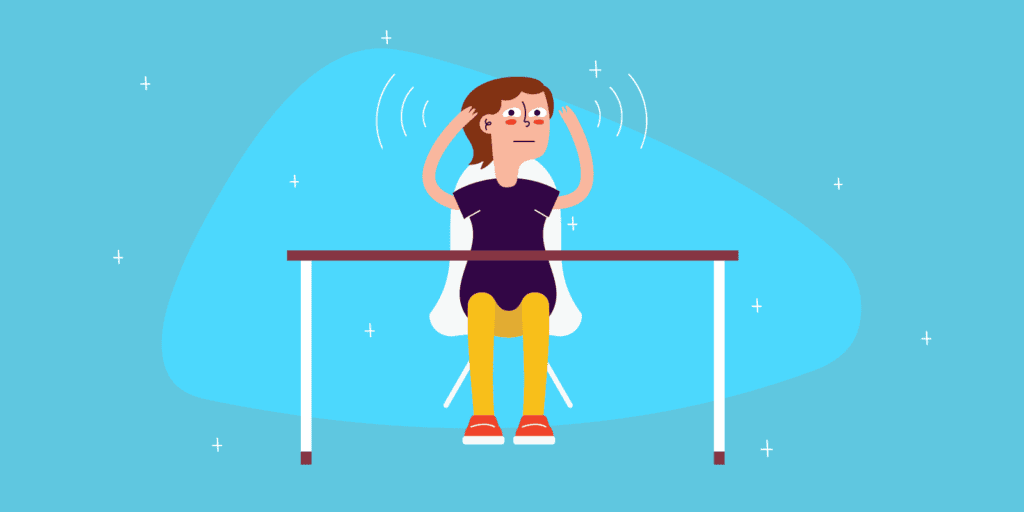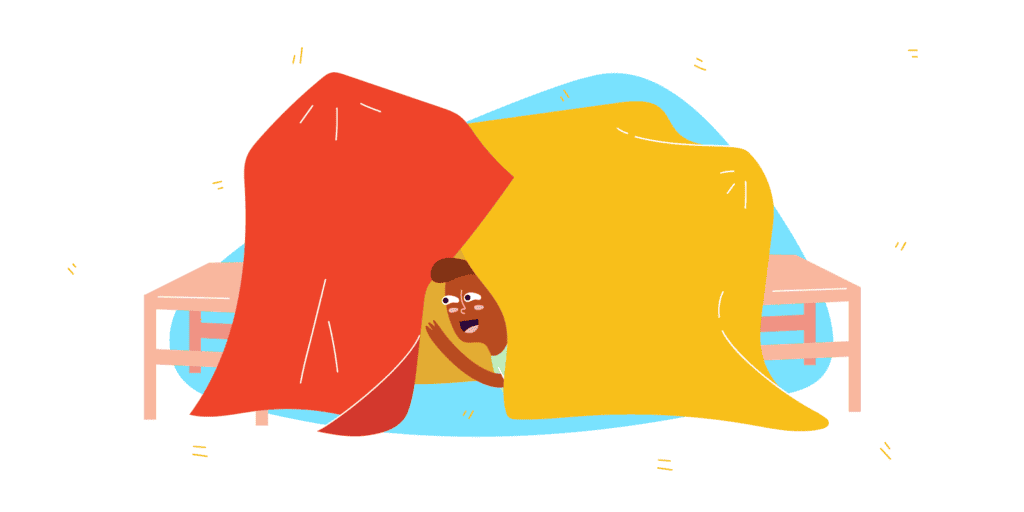Outfitting Your House for a Child With a Disability
Posted in: I'm Moving, Home Improvement, Kids & PetsAre you outfitting a home for a child with a disability? The U.S. Census Bureau reports that around 12 percent of the population is disabled while the PEW Research Center puts that number even higher. That means while only 5.4 percent of children five to seven years old are disabled, they still comprise a pretty large part of the population.
For those children, having a home that they can feel comfortable in is very important. Outfitting your home for a child with a disability, however, can be a nuanced process. Each type of disability is different and each requires special modifications to the house. Home modifications for disabled kids can also be costly depending on the amount of work that needs to be done.
If your house needs modifications because of a disabled child, or you’re looking for ways to create a space where your child with a disability can lead a safe and happy life, this guide will help. We’ll discuss the most common impairments and adaptations that can be made for every situation.
Chapters
Creating a Space Where Disabled Kids Can Thrive
Whether you recently acquired your new ability status, have moved into a house that needs updates or have a sudden need to make your home accessible, it’s important to assess the needs of your disabled child.
You will want to create a space where your disabled kid can feel at home, feel safe and free to be themselves. It’s important to consider the safety of each room, as well as the exterior of the house and common spaces. Consider your child’s unique needs and how you can make your house safer for them.
Adapting a Home to Medical Equipment
If your child will need medical equipment or medications, there are a few things to consider, such as safe storage for medical supplies and medicines. You may need to add outlets or additional power options if your child’s medical equipment is powered by electricity.
You must also consider whether your child’s equipment needs a backup power source. Would they need a generator during a power outage? If so, you should have one or two on hand. If your house has stairs and your child is mobility challenged, you may need a stair lift to ensure they have access to the whole house.
Staying in Budget when Modifying Your House
The cost for accessibility modifications can be anywhere from $1,600 to $14,160. Since there are such a variety of customizations, the gap is quite large.
Some children may struggle more than others. If you need to buy multiple pieces of equipment or make extensive modifications, it can get very expensive. When purchasing the equipment, consider which purchase is more important. Those that are life-sustaining or give your kid mobility will be the most important—prioritize these.
If you are having trouble affording the equipment you need, consider a loan. If you own your house, you may be able to use its equity to make modifications to it. The first step is to get a cost estimate from a contractor, then talk to your bank about acquiring the funds.
Undertake as many of the projects as you can on your own. Modifications such as grab bars and stepping stools can be easy to DIY. Contract out what you can’t do yourself with a local handyman or contractor and compare prices.
Since children grow fast, it can make more sense to buy secondhand equipment. Talk to your doctor first to discuss whether or not the items you need are safe to buy secondhand. If they are, you can look for used mobility equipment, therapy toys or adaptive furniture on Craigslist in your area. Medical equipment that must be sanitary is not a good choice for this option.
When to Move Instead of Modify
Modifying a house for a disabled kid can be difficult. Making renovations can get costly, so sometimes it makes sense to move into a house that is already accessible. If the costs to modify a house far exceed its worth, it may not be smart to modify.
If serious modifications are needed (like taking out walls or widening hallways), it can drive costs up fast, making it more affordable to move. If you live in a two-story house and your child cannot get up the stairs (or use a stair lift) on their own, it may be smart to move into a one-story house.
If the layout of your house does not allow for the necessary modifications or if the rooms are too small to accommodate your medical equipment, it may be time to move.
Talk to your real estate agent about new home options that are more fitting for your needs and compare costs of purchasing vs. modifying.
Modifications for Children in Wheelchairs
Your child in a wheelchair will have very different household needs compared to a child who is visually impaired or has cognitive struggles. Thought should be given into what modifications will make it easier and safer for your child in a wheelchair to get around.
Flooring
Throughout the house, flooring should be non-slip, which includes hardwood flooring, laminate flooring, most ceramic flooring and vinyl flooring with an embossed surface. Laminate flooring is a popular choice, as it is very durable and scuff marks are easily removed. If selecting carpet, low pile carpet should be used.
Exterior Modifications
Modifications will likely need to be made to the exterior of the house to make it safe and easily accessible for your child in a wheelchair.
- The front door should be widened to at least 36 inches to follow ADA recommendations for doorways.
- You will need to install an entrance ramp if there are stairs outside your house. The entrance will need to be step-free, meaning a level threshold, or have a small ramp to make it easier for your child to enter. There are many different options for wheelchair ramps.
- Concrete and sidewalks outside should be level and outfitted with traction control.
- There should be nothing blocking the entryway or path to the entrance. It’s best to have a five-foot square space in the entryway for the wheelchair to maneuver.
- Motion sensored lighting will make it easy for your child to access the entryway at all hours.
Doors, Hallways and Stair Modifications
Again, it’s incredibly important for your child to be able to move around inside the house easily.
- Hallways should be wide enough for a wheelchair to navigate through (at least 42 inches).
- Doors throughout the house should be a minimum of 34 inches but preferably 36 inches.
- In some situations grab bars on either side of the stairs will work, especially if it’s a small stairway. Larger stairways may require a stairlift installation.
Kitchen Modifications
Since your child will not be doing the bulk of the cooking, kitchen modifications don’t need to be as extensive as they would be for a disabled adult. But there are still a few modifications that can help your child feel welcome and at home in the kitchen.
- If your child will be able to warm things up for themselves and get snacks, it’s important to have at least one low cabinet or pull out drawer that they can utilize. This should also house something to eat on and utensils.
- If possible, have a wide open floor space so that your child can easily navigate the kitchen.
- There should be a kitchen table of appropriate height so that your child can pull up and eat, work on homework or craft.
- It would help to have a grabber device in the area so that the child can grab any snacks that are out of reach or light items they need.
Bathroom Modifications
The bathroom can be one of the most dangerous areas in the house due to slipping hazards and will likely require significant adjustments for a child in a wheelchair. Since each situation will be different, it can be helpful to watch your child maneuver the area and see where they are struggling. You can add grab bars and make modifications as they are needed. You will also want to:
- Ensure your bathroom is large enough for a wheelchair to turn around in.
- If possible, eliminate any edge or obstruction that would make it hard for them to get into the shower. Doorless showers can make it easy for a child to get in and out of the area to wash.
- Install grab bars along all sides of the shower so that your child can get themselves in and out easily.
- Place a seat inside the shower and position it so that your child can move easily from their chair to the bench.
- Make sure the floor has a no-slip pad to prevent injuries associated with slipping.
- Modify your sink for wheelchair access by either lowering it or reinforcing it to hold the weight of someone leaning on it.
- Lower the mirror so that someone in a wheelchair can see into it.
- Install grab bars by the toilet so that your child can easily maneuver onto it. The toilet area should be around 48 by 56 inches with at least 18 inches from the side wall.
Living Room and Bedroom Modifications
The living and bedroom areas should be positioned so that it’s easy for your child to move about.
- Arrange furniture so that there is nothing obstructing pathways in the house. Keep electrical cords off the floor.
- Designate a spot in the living room where your child can park their chair to join in on the activities.
- Avoid having area rugs as these can obstruct a wheelchair.
- Make sure there is ample room for your child to turn around and move freely in a wheelchair. Open-concept floor plans are great for this.
Modifications for Visually Impaired Children
Modifications for a visually impaired child should make it easier for them to navigate the house or evacuate in case of an emergency. Fortunately, modifications for the visually impaired can be done more easily and are often less expensive than modifications for the mobility challenged.
Exterior Modifications
The exterior of the house should be modified for safety when your child enters or leaves the home or spends time outdoors.
- The areas around the house should be well-lit and free of debris or things your child can easily trip on.
- It’s helpful to have grab rails available to your child if there are any stairs or steps up into the house.
- Keep items like tools or toys stored in the same area.
- Move fragile or dangerous items into a locked shed or garage.
Doors, Hallways and Stair Modifications
Any area that your child will be traveling through often will need to be cleared of debris and safe for them to move about.
- Tack or tape down any rugs or runners. Add non-slip mats underneath if you are able.
- Tape down any electrical cords or ensure they are not laying where your child can trip on them.
- Keep hallways and stairwells well lit.
Kitchen Modifications
The kitchen can be a particularly dangerous place for the visually impaired. These modifications can help reduce the chance of injury.
- Food, drinks and anything consumable should be labeled very clearly. If your child is blind or has extremely limited vision, you will need to label food items with braille. Here is a website that goes into extensive detail about labeling food items for the visually impaired.
- If your child will be heating up snacks or doing small cooking tasks, label the microwave or dials on the stove top. Make sure everything they will need is always in the same location.
- Keep dangerous things like knives and medication out of reach so your child can’t grab them.
Bathroom Modifications
The bathroom can also be dangerous for children who can’t see well (or at all). You can prevent injury by making sure special modifications are in place.
- Install a safety rail at the edge of the tub or in the shower.
- Mark their toothbrush with a rubber band or piece of tape so that it is easily identifiable.
- Buy towels and mats that have contrasting colors to the floors and fixtures in the bathroom. All mats should be non-slip.
- Use non-slip surfaces on the floor of the shower or tub.
- Purchase non-spill dispensers for soap, shampoo and other liquids.
Living Room and Bedroom Modifications
Your child should feel the most at home in your living areas and bedrooms. There are several modifications you can make to the room so that finding needed items becomes second nature to your visually impaired child.
- Use textures whenever possible so that your child can distinguish between things more easily.
- Keep all pathways clear of obstructions that your child could possibly trip over. Make sure other children in the house are aware that they will need to pick up after themselves consistently.
- Avoid area rugs or install non-slip rugs in common areas.
- Make sure everything your child would need has a “home” and try to remember to put it back after you’re done using it every time. Teach your children to do the same.
- Remove low-lying objects like coffee tables and ottomans that your child could trip over.
Modifications for Children with Sensory Concerns
Sensory processing issues like hypersensitivity or hyposensitivity can be caused by a number of reasons. For children with sensory processing issues, dealing with sensory information can be confusing and at times frustrating. They may exhibit resistance to change and trouble focusing, problems with motor skills, lack of social skills or poor self-control.
If you have a child with sensory needs, you will need to outfit your house so that it feels like a safe space for your child.
Throughout the House
Sometimes, even the normal hustle and bustle of a home is too much for a child with sensory issues. There are things you can to do tone down the intensity of your house so your child can function properly.
- Paint the walls in your house with neutral, soothing colors and avoid bright, bold colors.
- Install light dimmers so that you can dim the lights when needed.
- Keep your home free from clutter and unnecessary decor to cut down on the distractions.
- Avoid having candles or diffusers that may emit strong odors.
- Use weighted blankets in your child’s bedroom so that they can sleep better.
Create a Safe Space
It’s a good idea to have a safe space your child can retreat to if they need a moment to regroup. A “sensory corner” that is quiet and stocked with cozy, comfy things is a smart idea.
Pick a corner that is dim, quiet and warm. You could even consider building a little “fort”. They sell fort beds, but you can also get creative and make a DIY fort.
Fill it with blankets and pillows, quiet, imaginative toys, squishy seating like bean bag chairs, and books or some music they can listen to.
Provide for Sensory Input
While some children thrive with sensory avoidance, others actually need sensory input. If you have a sensory seeking kid, your home can become damaged as your child explores their surroundings seeking different sensations.
Create safe spaces for sensory experiences by adding things your child can play on like a trampoline for jumping or safe, padded spaces for jumping into. Noisy toys, seats that wiggle and bounce or any kind of toy where your child can create sensory experiences is helpful. Each child will be different, so keep an eye on your child to decipher their specific needs.
Modifications for Autistic Children
New studies report that around 1 in 68 children in the United States are on the autistic spectrum, with the majority of them being male. Cases can range in severity, so it’s important to assess your child’s individual needs and outfit your home accordingly.
Exterior Modifications
There are several things you can do to ensure that the exterior of your house is safe for your autistic child. It is common for autistic children to want to be outside and in motion, so leaving the home to go outside unsupervised is sometimes an issue.
Use locks and alarms on doors and windows so that you will be alerted when your child enters and exits the home. You will also want to make sure your yard is safe from dangerous items like yard-work tools or sharp objects.
Kitchen Modifications
The kitchen can become a dangerous place for an autistic child if the proper precautions aren’t taken. There are a few things you can do to make it safer and more difficult for them to injure themselves or others.
- Install durable surfaces and keep breakables out of reach. If your child has an outburst or participates in exploratory behavior, they can be destructive in the kitchen.
- Arrange kitchen furniture so that your child has an appropriate place to sit and work if they need to. Keep furniture away from shelves and anywhere else that they could possibly climb.
- Label things to explain their function or enforce rules. Images that say “STOP” or “NO” work well to deter your child from getting into things they shouldn’t. You can place these on doors that are not to be opened or containers that hold poisonous substances. Cleaning supplies should be locked away in these drawers or cabinets.
- Put sharp items such as scissors, knives or any other sharp tools high up or secured in a place where your child can’t access them.
- Keep lighters or matches locked up so your child doesn’t burn themselves while exploring their world.
- Store things in cupboards or pantries as much as possible to cut down on clutter which can upset autistic children.
- Buy appliances with safety features such as child locks or hidden controls.
Living Room, Bathroom and Bedroom Modifications
In the rest of the house, you will want to use special precautions to make sure your autistic child doesn’t harm themselves or cause damage to your house.
- Avoid using fluorescent lighting as these can tire autistic children out. Choose incandescent lighting whenever possible.
- Build a playroom or safe play space where they have free reign. Create an environment where it’s easy for your child to focus on you or their learning activities and explore the world around them.
- Reduce visual stimulation by coloring the rooms neutral or soothing colors and keeping the home clutter-free.
- Make electrical outlets safe by placing plastic covers over them when they are not in use. You will want to ensure that wiring for electronics is concealed in a way that the child can’t access the wires.
- Appliances can be made safe by using plastic child-proof knob covers for doors, faucets, ovens and stove burners. Lock the door to rooms that house the washer and dryer or power tools.
- Organize functional items in see-through plastic bins so that your child knows where everything is. Use visual labels like symbols or photos to mark these bins.
- Use visual signals to help your child understand limits and set expectations. Using colored tape to designate boundaries on carpets, floors and walls can visually remind children where their bodies should remain.
- Make fire safety a priority and always keep matches and lighters out of reached or locked up. Supervise your child closely when there is a fire in the fireplace or a barbecue with open flames. Make sure smoke detectors are always working properly.
Resources for Parents of Special Needs Children
There is a wealth of information available for parents of special needs children on the internet. Whether you’re interested in learning more about the needs of your child, gaining financial assistance or looking for emotional support, there is something available. We’ve listed some of our favorites below.
General Information and Support
-
- The Autism Society provides information for parents of children on the spectrum.
- The Council for Exceptional Children provides information and resources about special education.
- Family Voices provides children and youth with special health care needs information and support.
- The Federation for Children with Special Needs provides support for parents of special needs children.
- Parent to Parent USA offers support to parents of children with special needs.
- IncludeNYC has several resources for parents of special needs children.
- The National Low Income Housing Coalition provides information about housing solutions for people with special needs.
- The National Fair Housing Advocate Online educates about the issues of housing discrimination.
- Care.com has a number of helpful resources for parents of children with disabilities.
Financial Resources
- The USDA Rural Housing Home Repair Loan and Grant Program provides loans and grants to very low-income homeowners to repair, improve or modernize their dwellings or to remove health and safety hazards.
- The National Resource Center on Supportive Housing and Home Modification provides a state directory for finding a broad range of local resources for home modification financial aid.
- The National Center for Learning Disabilities gives scholarships to high school seniors who have been diagnosed with a learning disability.
- Possibilities is a financial resource for parents with disabilities.
- Project 10 is a site that provides information about scholarships, grants and financial resources for those with disabilities.

